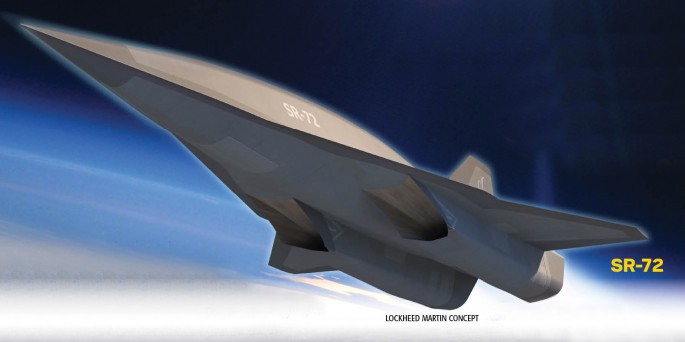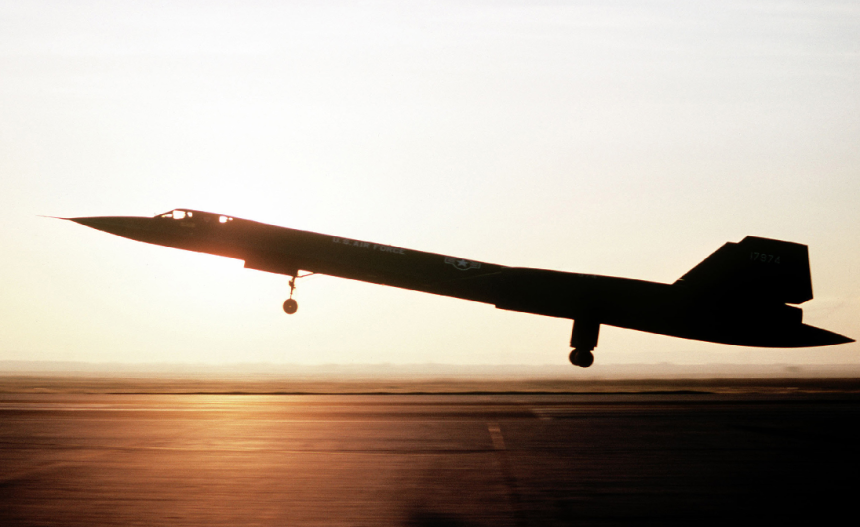The SR-71 was the first aircraft to feature stealth capabilities.
The Lockheed SR-71 Blackbird flew for the first time on Dec. 22, 1964 at Air Force Plant 42 in Palmdale, California. The first aircraft to enter service was delivered to the 4200th (later, 9th) Strategic Reconnaissance Wing at Beale Air Force Base, California, in January 1966. Throughout its career, that came to an end on Oct. 9, 1999, no SR-71 was reportedly lost nor damaged due to hostile actions: the SR-71 flew above Mach 3 at 85,000 feet, with a reported top speed of Mach 3.4 during flight testing and Mach 3.5 during on an operational sortie while evading a missile over Libya.
Although most historians and experts know it many aviation enthusiasts ignore that the Blackbird can somehow be considered the first stealth aircraft ante litteram.
Here’s what this author explained in a past article titled Well Before The SR-72 Was Conceived, The Iconic SR-71 Blackbird Proved “Speed Is The Real Stealth”:
The Blackbird was the first aircraft to feature stealth capabilities: a special paint that contained iron ferrites and absorbed radar energy instead of returning it to the sender was used for SR-71’s wings, tail and fuselage. The reduced RCS (Radar Cross Section) made any reaction to an SR-71 overflight almost useless: the aircraft was so fast that once the radar detected it, the SAM battery’s guidance system was not able to compute the right parameters for a successful kill. Moreover, the range and bearing of the SR-71 was also denied to the enemy by jamming the radars with the use of the sophisticated electronic countermeasures (ECM) that equipped by the Blackbird.
However, in spite of its radar-evading features, what made the SR-71 almost impossible to intercept, were its incredible flight characteristics: it was able to fly at 3.5 Mach at 88,000 feet. The aircraft could climb higher than that and according to some sources the Blackbird could reach 120,000 feet and above. At that altitude, Soviet SAMs would have been unable to maneuver to hit an SR-71: the air is so thin that any maneuvering capability of a missile is practically nonexistent, as explained by the former Blackbird pilot Col. Richard H. Graham in his book “SR-71 The Complete Illustrated History of THE BLACKBIRD The World’s Highest , Fastest Plane.”
In 2012 a DARPA statement stated that America was gradually losing the “strategic advantage” that its stealth warplanes had long provided, as other countries’ stealth and counter-stealth capabilities continued to improve. For this reason, “speed is the new stealth” is a slogan that accompanied the unveiling of the SR-72 in 2013. However, the SR-71’s story is a proof that speed has always been the key to stealth.
Not only did SAMs fail to catch the Blackbird but even the fastest Soviet fighter jets, including the MiG-31 Foxhound, lacked the necessary speed to reach the SR-71.
The last flight of an SR-71 took place on Oct. 9, 1999, during the Edwards AFB Open House Airshow. Fourteen years later, in 2013, Lockheed Martin’s Skunk Works, the legendary division that designed airplanes which represented a giant leap for their times such as the F-104, the U-2, the Blackbird family or the F-117A stealth fighter jet, revealed the existence of a sort of SR-71 replacement: a Hypersonic intelligence, surveillance and reconnaissance (ISR) and strike aircraft dubbed SR-72, designed for Mach 6.

On Sept. 27, 2017, Aviation Week reporter Guy Norris scooped the story about the landing of a mysterious, unidentified new aircraft at U.S. Air Force Plant 42 Production Flight Test Facility in Palmdale California.
“According to information provided to Aviation Week, one such [SR-72] technology demonstrator, believed to be an unmanned subscale aircraft, was observed flying into the U.S. Air Force’s Plant 42 at Palmdale, where Skunk Works is headquartered. The vehicle, which was noted landing in the early hours at an unspecified date in late July, was seen with two T-38 escorts. Lockheed Martin declined to comment directly on the sighting.”
In February 2018, Lockheed Martin, pushed back on reports of the SR-72’s development stating that no SR-72 had been produced. In November last year, Lockheed Martin stated that a prototype of the SR-72 was scheduled to fly by 2025. A sort-of SR-72 aircraft (or something inspired to it) is flown by Maverick (Tom Cruise) in “Top Gun: Maverick”, the sequel of the famous 1980s aviation movie.
Once operational the hypersonic strike aircraft will be able to fly about twice as fast as its predecessor. To date, the Mach 3+ SR-71 Blackbird remains the fastest, manned air-breathing aircraft ever produced.









